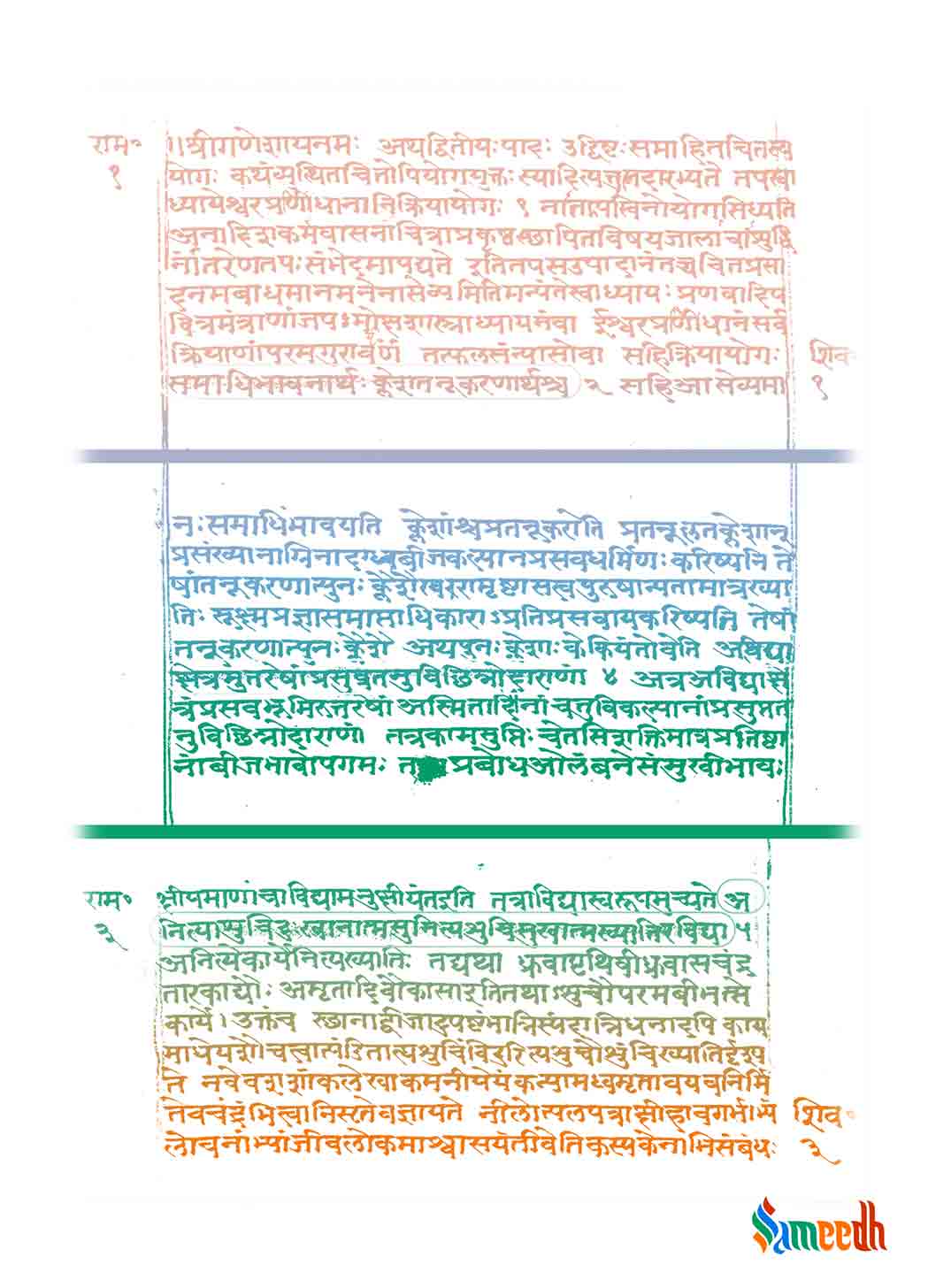Yogasutra is a compilation of the knowledge about Yoga created by Maharshi Patanjali. It is the standard guidebook for not only doing Yoga poses, but also becoming a Yogi in true sense

Some pages from a historic Yogasutra manuscript ; Image Source: Sarah Welch
ETYMOLOGY
Contrary to the popular belief, Yoga is not just about physical exercises. The word ‘Yoga’ actually means ‘Union’. Here, it refers to the union of a living being with the rest of the universe. The word ‘Sutra’ roughly means ‘a set of verses’. Hence, the term Yogasutra means the science, the knowledge, or simply ‘information’ about Yoga. Maharshi Patanjali is considered to be the author and compiler of Yogasutra, which is available in its present-day form.
DATING AND HISTORICAL CONTEXT
The history of Yogasutra goes back to the 2nd century BCE – as its first three volumes are believed to be that old. However, the last volume of Yogasutra is believed to be from the 5th century CE. Scholars believe that the last volume may be written by some other author as the grammar and writing style in that volume is significantly different from the earlier ones. Overall, the timeline of Yogasutra scriptures can be from 500 BCE to 5th century CE. And it should be noted that the knowledge of Yoga is quite older than that, without any doubt. The dating can only give us an indication of the timeline of the written ‘scriptures’.
CONTENT
Yogasutra is a compilation of information related to Yoga, which was scattered across numerous scriptures and educational institutions. Yogasutra has about 196 Sutra or verses which are divided into 4 volumes.
1. Samadhi Pad containing 51 verses – An introduction to the philosophy of Yoga
2. Sadhana Pad containing 55 verses – Process of performing Yoga and becoming a Yogi
3. Vibhuti Pad containing 55 verses – The good impact of regularly doing Yoga in life
4. Kaivalya Pad containing 35 Verses – Experiencing the ultimate union and liberation
LEARNINGS
One of the most important parts of the Yogasutra is Sadhana Pad which provides information about the Yogic methods. They include two major types of processes – Kriya Yoga and Ashtang Yoga. Kriya Yoga focuses on getting the correct discipline in place before going towards Ashtang Yoga. And the Ashtang Yoga – Ashtang means eight organs – focuses on advanced level Yoga practices which also include Asana or Postures.
The other three Pad – Samadhi Pad, Vibhuti Pad, and Kaivalya Pad focus on attaining the correct attitude, devotion, approach, spirituality, restrictions, and isolation of mind as well as the body.
CULTURAL INFLUENCE
Yoga has become immensely popular all around the world because of its physical and mental health benefits. There is much awareness about the physical postures or Yogasan, but most of the people do not know about the other aspects of Yoga – such as Swadhyay (Self-study), Tap (Austerity), Yam (Morality), Niyam (Discipline), Pranayam (Breathing Exercise), Dharana (Concentration), etc.
If you are still wondering why people are going gaga over Yoga, just try it out yourself and feel the difference. With Yoga, what you achieve physically cannot be expressed in words; and the number of spiritual possibilities that Yoga will open up for you cannot be imagined. So, the first thing you need to do is start by reading more about Yoga.
